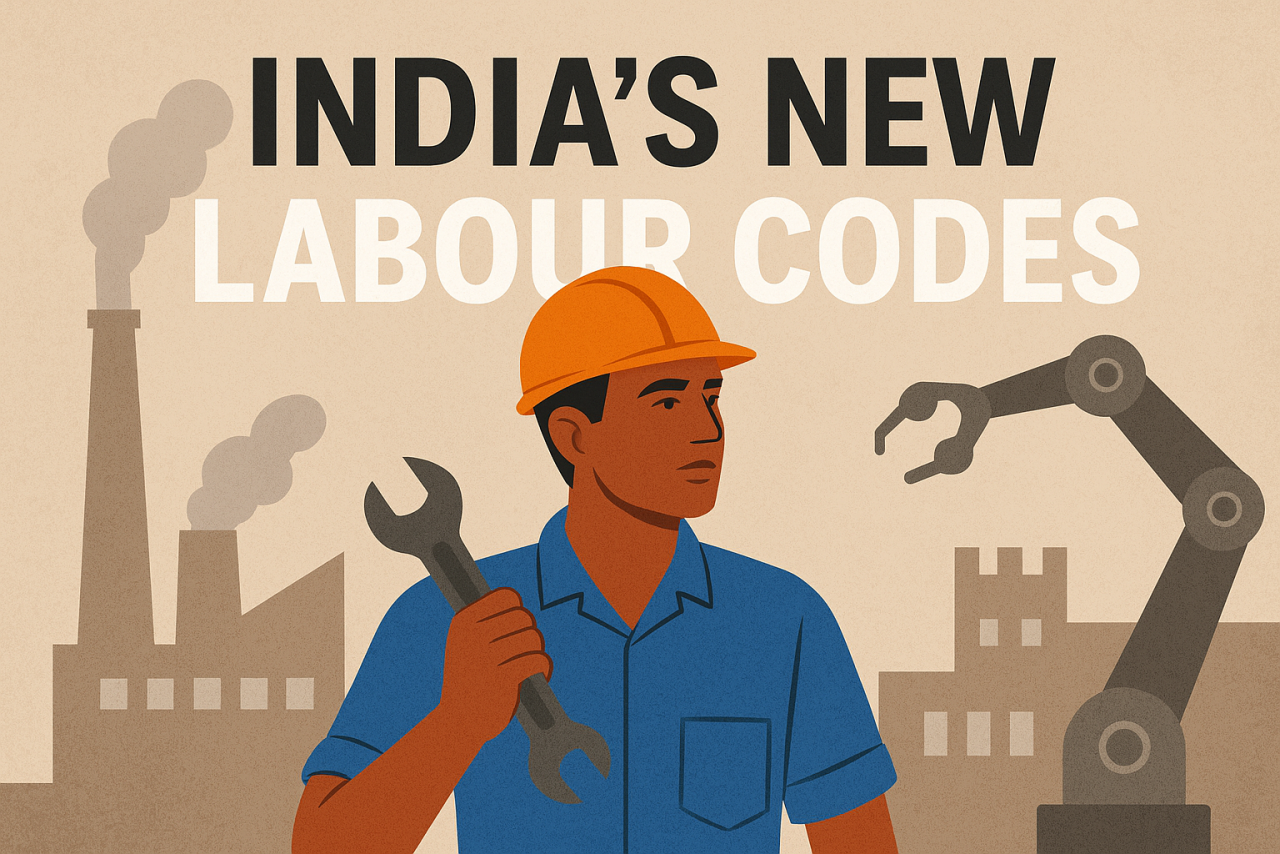
For a long time, India has carried the weight of old labour regulations that did not match the speed at which the economy was changing. Businesses often complained about a confusing maze of rules. Workers felt they did not always receive fair protection or benefits. Manufacturing remained stuck, unable to grow into a strong global competitor even though India has one of the world’s largest young workforces.
The introduction of the four new labour codes by the Union government is an important moment in India’s economic journey. These codes focus on wages, industrial relations, social security, and occupational safety. Together, they aim to bring clarity, consistency, and fairness to a system that has been scattered for decades.
Many experts believe that if these reforms are used properly, they could help India compete in the global market, attract investment, and create better job opportunities.
Modern Labour System
One of the biggest goals of the new labour codes is to simplify things. Instead of dealing with more than two dozen separate laws, the codes try to bring everything under four main categories. This reduces confusion for employers and gives workers a clearer understanding of their rights.
The codes also aim to increase the level of formal employment in the country. India has a very large informal sector where workers do not receive stable wages, paid leave, or social protection. By making rules more structured and easier to follow, the government hopes that more companies will move towards formal hiring.
A single definition of wages will help avoid disputes. Stronger safety rules will make workplaces healthier. Including gig and platform workers in social security is an important step, especially at a time when delivery workers, drivers, and freelancers form a large part of the workforce.
The push toward formalisation could improve the quality of employment in the long run.
Flexibility for Workers
The new industrial relations code has received the most attention. By increasing the threshold for requirements related to layoffs and closures, the government hopes to reduce fear among employers who hesitate to hire more people. Many entrepreneurs have said that under the old laws, they avoided expanding their workforce because they were worried about being stuck with rules they could not manage.
However, this flexibility does not mean that workers are left unprotected. The codes still maintain essential safeguards and aim to improve transparency in how companies manage work hours, overtime, and safety. The idea is to balance growth with protection.
There have also been positive signs from states that have already implemented parts of the reforms. Some states allowed women to work at night if safety measures were guaranteed. As a result, the number of women in industries such as electronics, textiles, and food processing increased. This shows that when rules are modern and safe, it can open doors for more inclusive participation in the workforce.
Reforms Matter
The global economy is facing difficult times. Growth is slow and markets are unpredictable. This may seem like the wrong time for major reforms, but history shows that tough periods often push countries to make necessary changes.
India is trying to position itself as a strong manufacturing hub at a time when companies around the world are looking to shift supply chains. Many countries want reliable partners for production. If India can provide a stable and modern labour environment, it can use this moment to attract investment that may otherwise go to competitors.
India also wants to strengthen the idea of Atmanirbhar Bharat. A modern labour system supports self-reliance by creating conditions that allow local industries to grow, produce at large scale, and compete globally.
Challenges to Overcome
The success of the labour codes now depends on how well they are put into practice. Passing a law is only the first step. The real test lies in enforcement, awareness, and coordination between the central and state governments.
Workers need easy access to information about their rights. Small businesses need support to understand new compliance rules. States must apply the laws consistently. Digital systems must be efficient enough to handle registrations, claims, and benefits.
If implementation is uneven, the reforms may not deliver the results they promise. If done well, they can help India reduce fragmentation in the labour market, promote fairness, and improve productivity.
New Beginning
The new labour codes offer India an opportunity to reset the relationship between work, workers, and industry. They are not perfect and they will not solve every problem. However, they mark an important shift toward a future where laws are clearer, workplaces are safer, and businesses feel confident about expanding.
The real benefit will come when workers feel more secure, companies feel more capable of growth, and the economy becomes more resilient. India has waited a long time for a labour system that matches its ambitions. These reforms could be the beginning of that transformation.




















